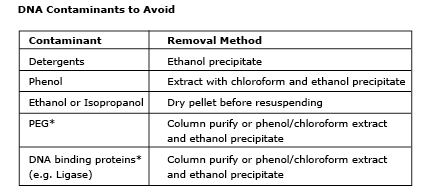High Efficiency Transformation Protocol (C2566)
Overview
For C2566H, perform steps 1-7 in the tube provided.
Protocol
- For C2566H: Thaw a tube of T7 Express Competent E. coli cells on ice for 10 minutes.
For C2566I: Thaw a tube of T7 Express Competent E. coli cells on ice until the last ice crystals disappear. Mix gently and carefully pipette 50 µl of cells into a transformation tube on ice. - Add 1-5 µl containing 1 pg-100 ng of plasmid DNA to the cell mixture. Carefully flick the tube 4-5 times to mix cells and DNA. Do not vortex.
- Place the mixture on ice for 30 minutes. Do not mix.
- Heat shock at exactly 42°C for exactly 10 seconds. Do not mix.
- Place on ice for 5 minutes. Do not mix.
- Pipette 950 µl of room temperature SOC into the mixture.
- Place at 37°C for 60 minutes. Shake vigorously (250 rpm) or rotate.
- Warm selection plates to 37°C.
- Mix the cells thoroughly by flicking the tube and inverting, then perform several 10-fold serial dilutions in SOC.
- Spread 50-100 µl of each dilution onto a selection plate and incubate overnight at 37°C. Alternatively, incubate at 30°C for 24-36 hours or at 25°C for 48 hours.
Thawing: Cells are best thawed on ice and DNA added as soon as the last bit of ice in the tube disappears. Cells can also be thawed by hand, but warming above 0°C will decrease the transformation efficiency.
Incubation of DNA with Cells on Ice: For maximum transformation efficiency, cells and DNA should be incubated together on ice for 30 minutes. Expect a 2-fold loss in transformation efficiency for every 10 minutes this step is shortened.
Heat Shock: Both the temperature and the timing of the heat shock step are important and specific to the transformation volume and vessel. Using the transformation tube provided, 10 seconds at 42°C is optimal.
Outgrowth: Outgrowth at 37°C for 1 hour is best for cell recovery and for expression of antibiotic resistance. Expect a 2-fold loss in transformation efficiency for every 15 minutes this step is shortened. SOC gives 2-fold higher transformation efficiency than LB medium; and incubation with shaking or rotating the tube gives 2-fold higher transformation efficiency than incubation without shaking.
Plating: Selection plates can be used warm or cold, wet or dry without significantly affecting the transformation efficiency. However, warm, dry plates are easier to spread and allow for the most rapid colony formation.

